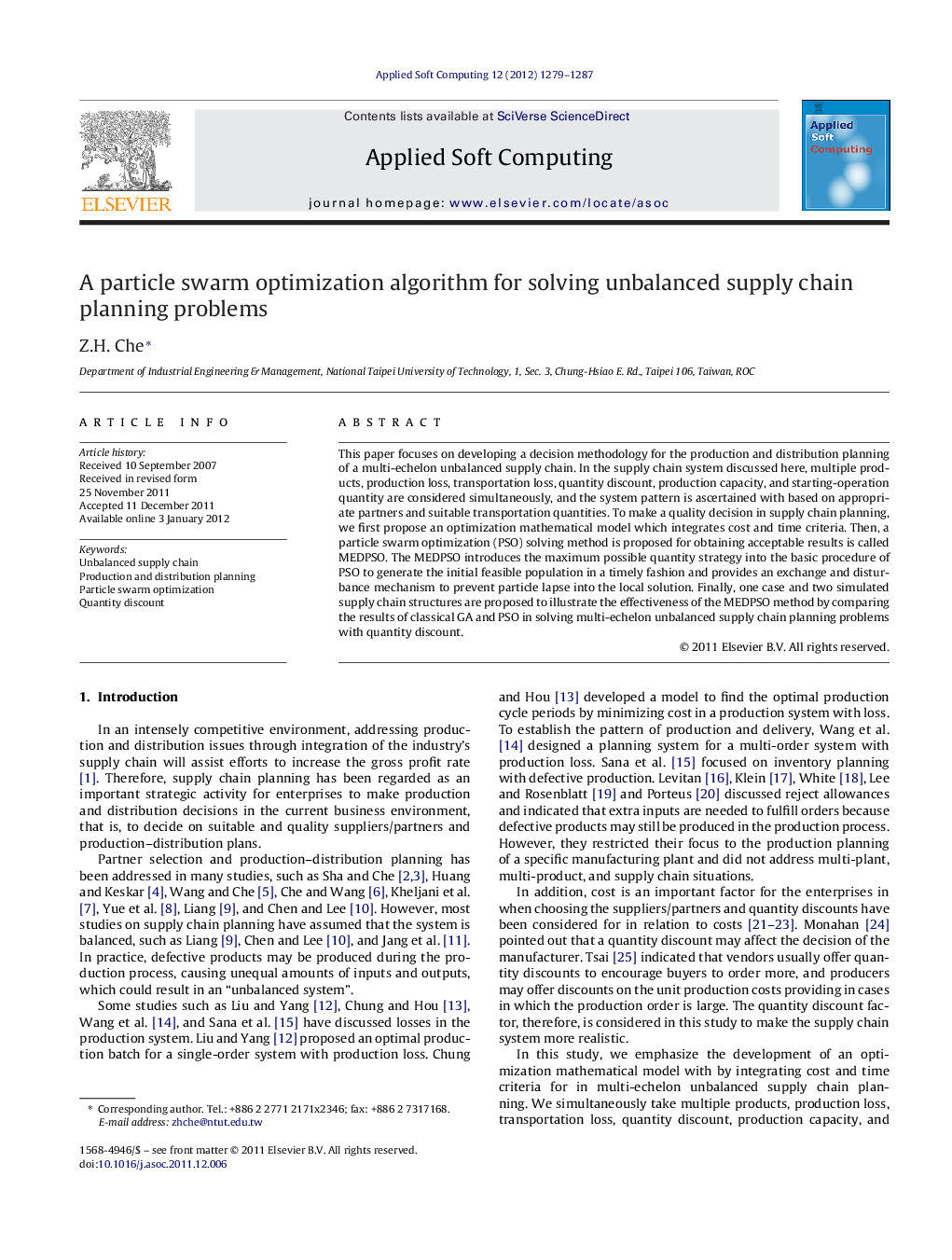| Article ID | Journal | Published Year | Pages | File Type |
|---|---|---|---|---|
| 495990 | Applied Soft Computing | 2012 | 9 Pages |
This paper focuses on developing a decision methodology for the production and distribution planning of a multi-echelon unbalanced supply chain. In the supply chain system discussed here, multiple products, production loss, transportation loss, quantity discount, production capacity, and starting-operation quantity are considered simultaneously, and the system pattern is ascertained with based on appropriate partners and suitable transportation quantities. To make a quality decision in supply chain planning, we first propose an optimization mathematical model which integrates cost and time criteria. Then, a particle swarm optimization (PSO) solving method is proposed for obtaining acceptable results is called MEDPSO. The MEDPSO introduces the maximum possible quantity strategy into the basic procedure of PSO to generate the initial feasible population in a timely fashion and provides an exchange and disturbance mechanism to prevent particle lapse into the local solution. Finally, one case and two simulated supply chain structures are proposed to illustrate the effectiveness of the MEDPSO method by comparing the results of classical GA and PSO in solving multi-echelon unbalanced supply chain planning problems with quantity discount.
Graphical abstractFigure optionsDownload full-size imageDownload as PowerPoint slideHighlights► We develop an optimization mathematical model with by integrating cost and time criteria for in multi-echelon unbalanced supply chain planning. ► We simultaneously take multiple products, production loss, transportation loss, quantity discount, production capacity, and starting-operation quantity into consideration. ► We present a modified PSO method (MEDPSO) for solving the mathematical model developed for the multi-echelon unbalanced supply chain planning problem. ► The experimental results of three different supply chain structures indicate that the MEDPSO method can obtain a better quality solution compared to classical GA and PSO.
